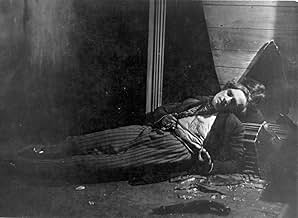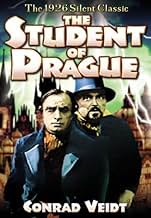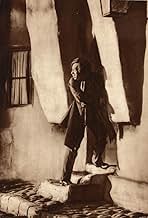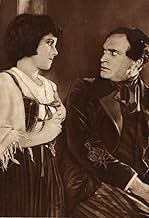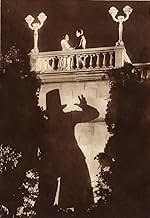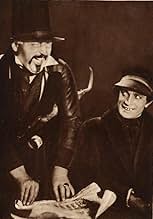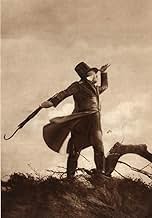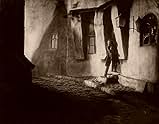Adicionar um enredo no seu idiomaFor Balduin, going out to beer parties with his fellow students and fighting out disputes at the tip of the sword have lost their charms. He wants to find love; but how would he, a penniless... Ler tudoFor Balduin, going out to beer parties with his fellow students and fighting out disputes at the tip of the sword have lost their charms. He wants to find love; but how would he, a penniless student, ever dare looking up to any woman worth of loving? Absorbed in his dreary though... Ler tudoFor Balduin, going out to beer parties with his fellow students and fighting out disputes at the tip of the sword have lost their charms. He wants to find love; but how would he, a penniless student, ever dare looking up to any woman worth of loving? Absorbed in his dreary thoughts and indifferent to the advances of Lyduschka, Balduin is unexpectedly offered a fortune... Ler tudo
- Direção
- Roteiristas
- Artistas
- Liduschka, Blumenmädchen
- (as Elizza la Porta)
- Comtesse Margit, seine Tochter
- (as Agnes Esterhazy)
- Direção
- Roteiristas
- Elenco e equipe completos
- Produção, bilheteria e muito mais no IMDbPro
Avaliações em destaque
Obviously, close-ups and medium shots were common by 1926, where there were none in the aforementioned film of 1913. There's scene dissection, some inspired cinematography and editing and expressionistic sets by Hermann Warm, as well. We actually get to see the actors here, and Conrad Veidt and Werner Krauss do exceptionally well. The gypsy storyline fits into this version easily.
Cinematographers Günther Krampf and Erich Nitzschmann produced a large shadow of the Devil, which interacts with mass, in one shot; superimpose a saw cutting at Balduin's head in a moment of internal narration; shake the camera for a drunk POV shot; use irises and move the camera during close-ups. The rescue from a horse scene and the haunting finale are the most impressive visually, for the chiaroscuro lighting, special effects and editing. Some shots even seem intentionally reminiscent of the 1913 version. Additionally, the filmmakers were able to punctuate the mirror motif within this film of the doppelgänger thanks to state-of-the-art effects.
The only things I know about director Henrik Galeen are that he directed "The Golem" and wrote "Nosferatu." But I am willing to maintain that he was a movie genius of the first order. His work is full of wonderful expressionistic flourishes, reminiscent of "Caligari," which is probably not surprising since the two movies share the same production designer, Hermann War (they also share Veidt of course). The movie's highlights are unforgettably effective, including the fantastic moment when Scapinelli's giant shadow snatches a love letter that Balduin has sent to the countess. In another scene, Galeen uses a shaky hand-held camera for a drunken POV shot. There's also a neat bit of foreshadowing in an early scene in which Balduin fences with himself in the mirror. I noticed some other shots that anticipated future movies:
o A long shot of Scapinelli, in silhouette, alone on a hilltop next to a solitary tree, vowing revenge ("Gone With the Wind") o A fox hunt captured through hand-held cameras and jerky editing ("Tom Jones") o A lovelorn girl sublimates her unrequited feelings for a guy by secretly cleaning his apartment ("Chungking Express") and get a load of the way she fondles his saber! YOW!
Either these shots are coincidences, or "The Student of Prague" was far more influential than is generally known.
Well, now that I have finally bagged "The Student of Prague," I can turn my quest to two other objects: (1) a decent print of it (preferably in a theatrical screening); and (2) the original 1913 movie, of which this 1926 version is just a johnny-come-lately remake.
** 1/2 (out of 4)
German horror/drama is a remake of the 1914 version, which was the first German horror film. A poor college student (Conrad Veidt) falls in love with a rich girl but knows he'll never get her due to his poorness. Then enters Scapinelli (Werner Krauss), a strange man who offers the student 600,000 gold pieces in return for something from the students room. The student agrees but is shocked when the man takes his soul. Outside the good performances by Veidt and Krauss, this film really doesn't add too much that the 1914 film didn't do better. This film here runs fifty-minutes longer but the tiresome pace doesn't help matters and even the special effects were better done in the previous version.
Você sabia?
- CuriosidadesElizza La Porta's debut.
- Versões alternativasVersion restored in 1999 for the Munich Film Archive based on a copy with Spanish intertitles from the Archivo Nacional de la Imagen y la Palabra - Sodre in Montevideo that was secured by L'Immagine Ritrovata, Bologna, and a German copy secured by Gosfilmofond, Moskow. The version has been re-tinted, with the tinting only partially matching that of the Spanish copy. Music by Stephen Horne, sound Orpheus Studio, London. Runtime 2 hours 13 minutes.
- ConexõesEdited into Histoire(s) du cinéma: Le contrôle de l'univers (1999)
Principais escolhas
- How long is The Student of Prague?Fornecido pela Alexa
Detalhes
- Data de lançamento
- País de origem
- Idioma
- Também conhecido como
- The Student of Prague
- Empresa de produção
- Consulte mais créditos da empresa na IMDbPro
- Tempo de duração
- 1 h 50 min(110 min)
- Mixagem de som
- Proporção
- 1.33 : 1

